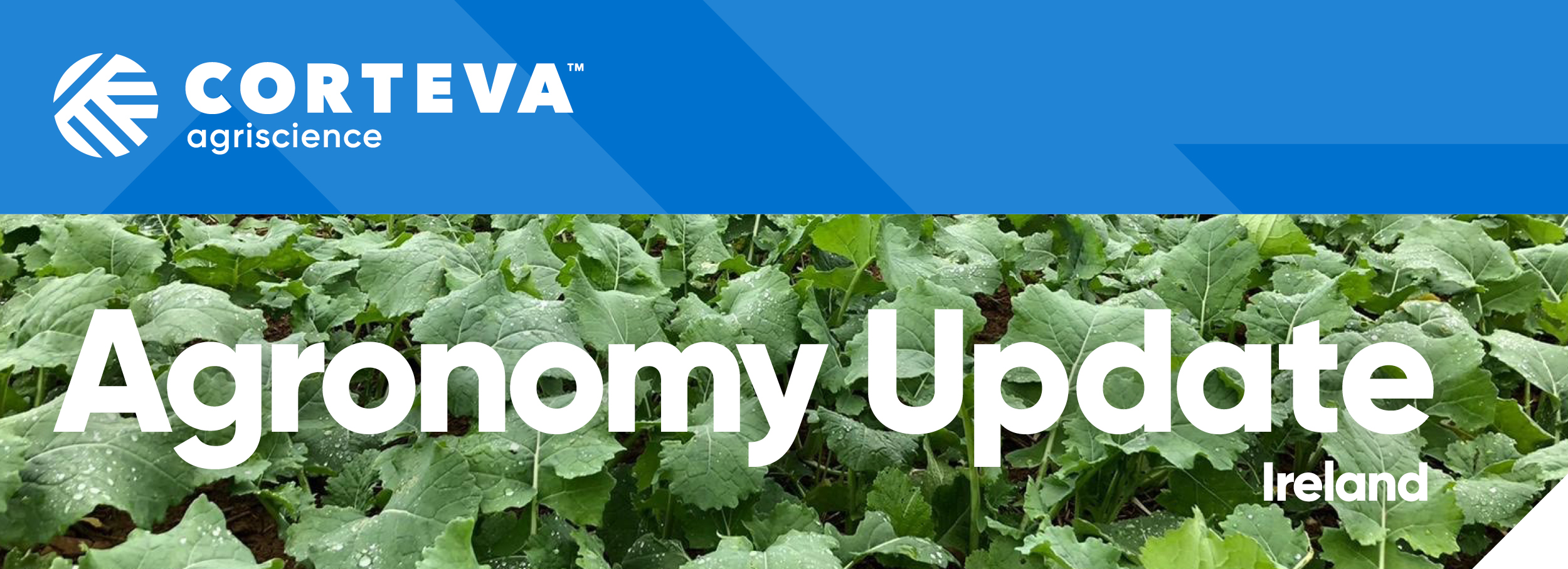
|
|
|
In the April edition
- Optimise your weed control with Pixxaro EC
- T1 and T2 fungicide decisions
- Potato planting progress and weed management considerations
- Oilseed rape crop update
- Pioneer winter oilseed rape hybrid range
- Instinct: Keep nitrogen where it’s needed during maize establishment
- Ympact biostimulant seed treatment
- Update your communications preferences, enter our monthly prize draw plus ways to earn IASIS points
|
|
|
Optimise your weed control with Pixxaro EC
As the growing season progresses, it's essential to address weed control as soon as possible to prevent competition impacting yield. Even if residual herbicides have been applied for annual meadow grass, broad-leaved weeds will inevitably emerge.
Selecting the appropriate herbicide is crucial for effective weed management. Current cold conditions pose a challenge for sulfonyl-urea (SU) herbicides, which require warm and moist conditions to be effective. Even when there is sufficient soil moisture, if it remains cold, there is no active growth and consequently the SU herbicides will not work properly.
In contrast, Pixxaro® remains effective under cold conditions. Combining Arylex™ and fluroxypyr, it offers an alternative mode of action (Auxin mimic) and is particularly effective against ALS-resistant chickweed, a significant problem weed affecting many spring barley crops around the country.
Pixxaro boasts a broad weed spectrum and the Arylex component also enhances the control of ALS-resistant poppy, further broadening Pixxaro's efficacy.
By incorporating Pixxaro into your weed control programme, you can ensure robust protection against a wide range of weeds, even under challenging conditions. It excels at controlling challenging weeds such as cleavers, fumitory, chickweed, fat hen, black bindweed, poppy and shepherds purse and may be used much later in the season than phenoxy herbicides.
Where large polygonum species are an issue, control may be boosted by adding an SU herbicide.
Pixxaro also degrades rapidly in the soil, allowing flexible following crop options; a key consideration during dry periods where actives with slower degradation times could impact any following sensitive crop species that are drilled.
|
|
|
T1 and T2 fungicide decisions
With excellent crops in the ground, due to favourable conditions since drilling, the yield potential is there, and needs to be protected. With T0’s applied to many crops, mainly in the form of Sulphur + Comet, its now time to decide on T1 (leaf 3) and T2 (flag leaf) applications.
At the recent Teagasc Workshops, it was noted that 65% of the crop area consists of Graham and KWS Dawsum, which are rated 4 and 5 for Septoria, respectively. With this in mind, robust programmes are needed to manage these varieties. Given the weaknesses of both, should Inatreq™ be the product of choice at your T1 application? In trials over the last number of years, it has shown superior efficacy over other market standards in high pressure situations. With its excellent protection, it gives insurance that the crops potential is safe heading into T2. It should be used at a robust rate, with a mix partner, and always include Folpet. Its important to note that Inatreq can only be used once in your disease control programme.
Some discussions took place with Dr. Steven Kildea and Dr. Tom McCabe with these very questions put to them. Please visit this link below to get their understanding of the season and where Inatreq should be used in the programme:
|
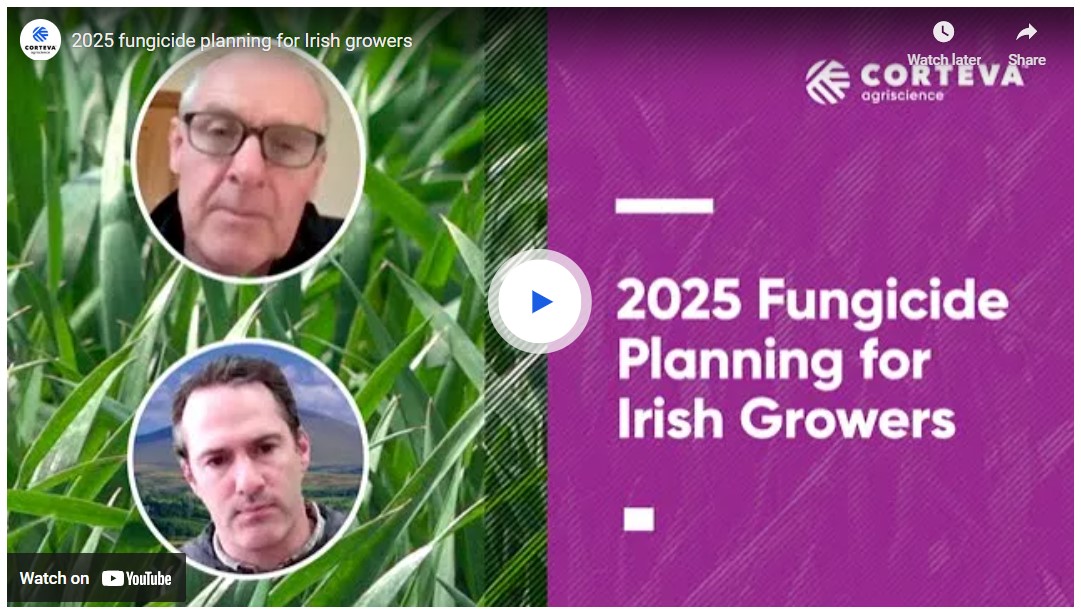
|
|
|
Potato planting progress and weed management considerations
Potato planting is progressing very well given the favourable weather conditions, with most growers having had their earliest finish in many years.
The 2024 harvest was notably easier than the previous campaign, which should help reduce the challenge posed by volunteer plants. A smoother planting campaign should also give growers ample time to manage grading line dumps, thereby minimizing early-season risks.
Focus on herbicides
With it being too early to assess the situation in relation to late blight at present, thoughts instead should be more focused around herbicides. A dry-planted ridge may not retain its shape, and pre-emergence herbicides applied in a seal on the ridge could be disrupted by gravity and wind, potentially allowing weeds to flourish once rainfall or irrigation occurs. This increases the likelihood of a greater weed flush, which could reduce the effectiveness of the pre-emergence herbicides typically relied upon.
Titus®, a contact acting herbicide, offers the perfect solution for these conditions. Containing rimsulfuron, it targets key problem weeds such as cleavers, chickweed, redshank, mayweed and oilseed rape volunteers. Use Titus from 1st February, pre-emergence, up until the crop is 25cm high.
Application guidance for Titus herbicide
Timing: Apply Titus when broad-leaved weeds are small and actively growing, typically from the cotyledon to four-leaf stage. For grasses, apply pre-tillering (two-to-three leaves).
Compatibility: Titus is suitable for all potato varieties except seed crops. Titus can be used with metribuzin to broaden the weed control spectrum in tolerant potato varieties.
Dosage: Apply Titus at 50g/ha when used alone, or 40-50g/ha when mixed with metribuzin.
|
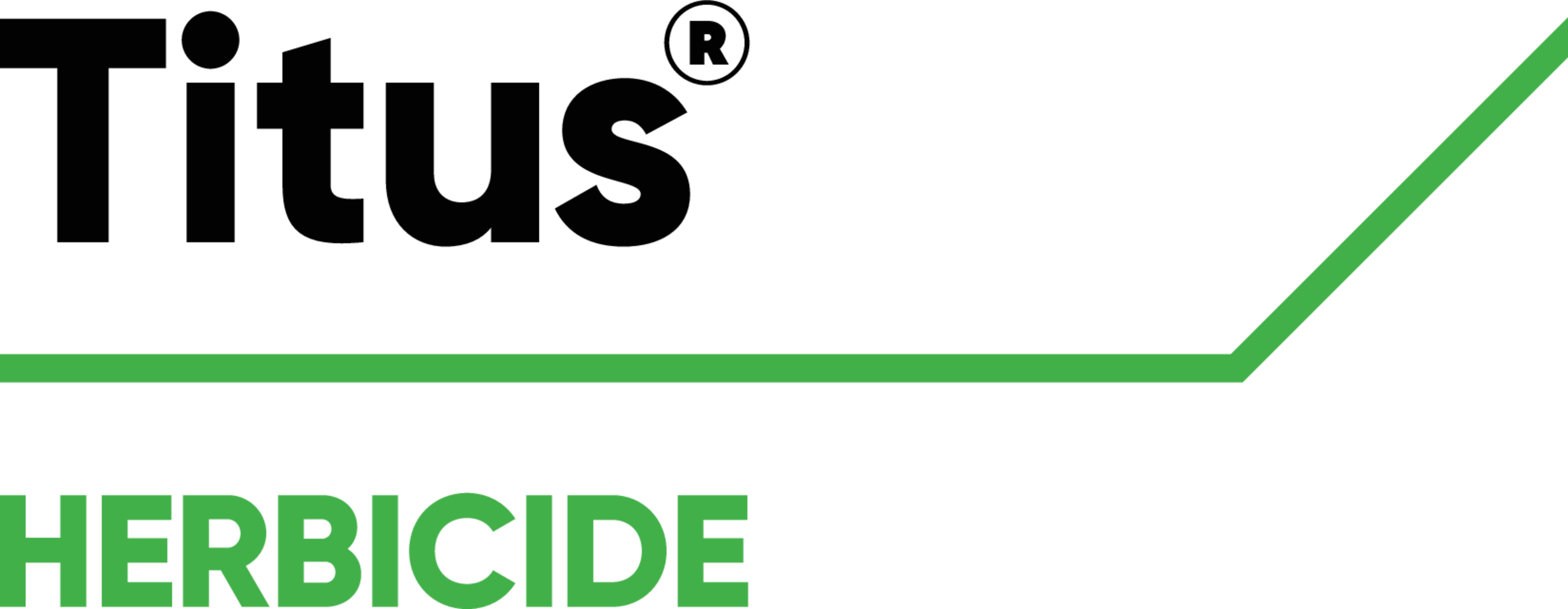
|
|
|
Oilseed rape crop update
As we near the end of April, we are pleased to report that many winter oilseed rape crops are entering spring with strong growth compared to previous years.
Grass weed control from applications of Kerb® Flo or Astrokerb® in the autumn worked well giving great control of blackgrass, ryegrass and annual meadowgrass.
The start of spring was slow, which extended the window for Korvetto® applications due to the slower growth. We received many reports of late germinating mayweed, cranesbills and cleavers, of which we know Korvetto does a great job to control!
There are some impressive oilseed rape crops out there, showing great potential. However, we did receive reports of pigeon damage in some areas. It was worth waiting in many cases to see the crop recover, particularly after a dose of fertiliser and as temperatures have increased. If the buds and growing point are not affected, the crop normally recovers. Having patience in these cases has paid off.
|
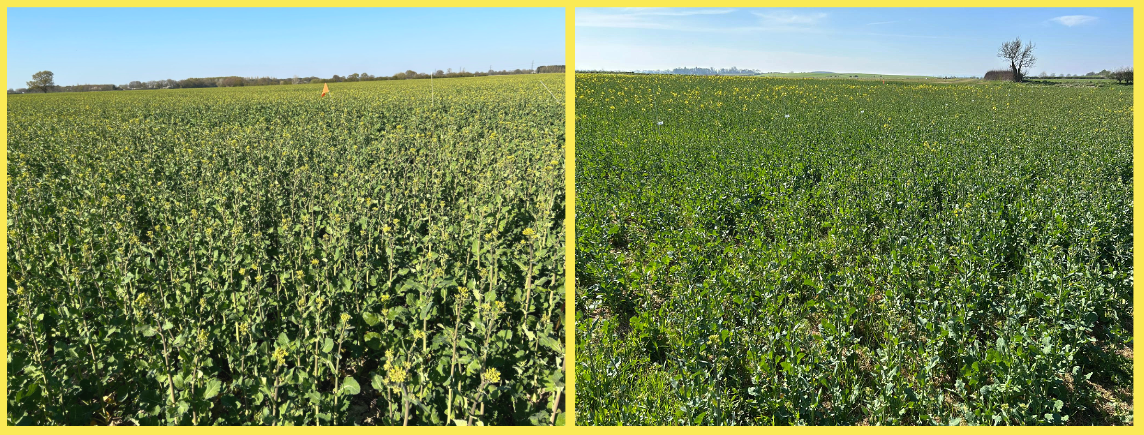
|
|
|
Pioneer winter oilseed rape hybrid range
Our range of Pioneer® WOSR hybrids that have been extensively tested across a variety of sites in the UK and Ireland. Available for 2025/2026:
- PT303: The first hybrid to be marketed with built-in tolerance to Sclerotinia, that also has partial resistance to Verticillium Stem Stripe.
- PT312: Provides a very high gross output yield with a very high oil content. It combines Protector® Sclerotinia tolerance with partial resistance to Verticillium Stem Stripe and Turnip Yellows Virus resistance.
- PT315: Provides a very high gross output yield with a very high oil content. It combines Pod Shatter resistance with Turnip Yellows Virus resistance.
For further information about Pioneer Oilseed Rape hybrids, visit the Pioneer hub or take a look at the agronomic descriptions table below.
|
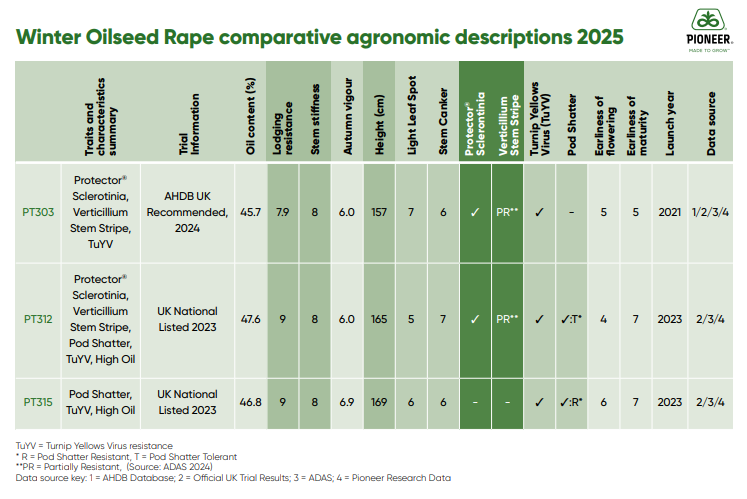
|
The 2025/2026 WOSR hybrid guide can be downloaded here.
|
|
|
Keep nitrogen where it’s needed during maize establishment with Instinct
When growing maize it is worth considering adding Instinct®, a nitrogen stabiliser, when slurries, digestate, or other fertiliser applications are made to extend the nutrient availability to plants while they establish.
Instinct stabiliser has demonstrated reductions in nitrogen leaching of approximately 50%, and denitrification through greenhouse gases of around 45%, which means more nitrogen is kept where it is needed as maize crops develop.
Instinct utilises Corteva's unique Optinyte™ technology, keeping more nitrogen in the soil for longer periods, significantly improving use efficiency. The product works by slowing down the conversion of ammonium to nitrate, preventing nitrogen loss through leaching and denitrification, and ensuring more remains in the rooting zone.
Application is flexible – Instinct can be mixed into slurry or digestate before field application, or sprayed on shortly after. It's also compatible with any fertiliser containing ammonia, such as sludge, urea, UAN and ammonium nitrate.
For dairy farms specifically, Instinct offers significant advantages, particularly for maize crops which often face nitrogen limitations due to current regulations.
The timing of nitrogen availability is another crucial factor that Instinct addresses for maize growers.
"You don't need to necessarily change what you put on, Instinct just makes everything work better and more economically." Read more here.
|
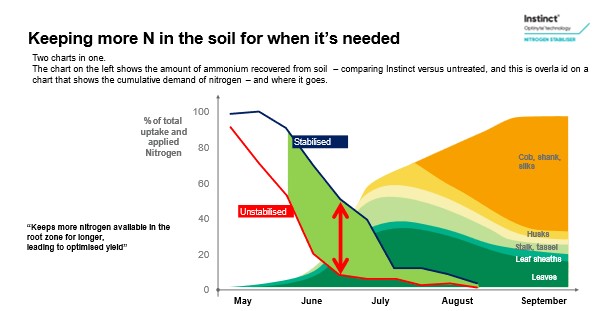
|
For more information visit the Instinct product page here or contact our hotline.
|
|
|
How much do you know about Ympact biostimulant seed treatment?
Ympact® is a novel biostimulant seed treatment enhancing seedling growth by optimising metabolic processes and abiotic stress tolerance.
With the recent dry weather in many parts of the country, early drilled crops of spring cereals need all the help they can get to germinate and get established. A lot of spring cereals are in the ground with more to go in across some areas.
To help get your crops off to a good start, adding Ympact to your standard seed dressings will help with early root and shoot development.
The Humic and Fulvic acids with bonded nutrients, Zinc, Copper and Manganese help with abiotic stress tolerance.
With the dry weather reducing soil moisture, humic substances in Ympact can help retain approximately 7 times its volume in water close to the seed.
A reduction in chemical stress from conventional seed treatments also allows plants to develop undisturbed.
To find out more information, visit the product page, or click to watch our new video on the benefits of using Ympact here.
|

|
|
|
Want to hear more from us?
Update your preferences and tailor your choices to make sure you receive the communications that are right for you, or if you haven't already, sign up to our communications by clicking here. Don't forget to enter into our monthly prize draw by ticking the box before submitting to be in with a chance to win!
You can also stay in the loop with all the latest updates by following us on X and Facebook.
|
|
|
|
|
|
Ways to stay in touch
Area Manager and National Technical Manager: Liz Glynn, 00353 (86) 844 5306.
Visit our website www.corteva.ie for product information, labels and advice.
Our hotline team are on hand to answer any queries or concerns you have.
|
|
|
10 IASIS points will be awarded to those subscribing to this Agronomy Update.
|
USE PLANT PROTECTION PRODUCTS SAFELY. Always read the label and product information before use. For further information including warning phrases and symbols refer to label. ®, ™ Trademarks of Corteva Agriscience and its affiliated companies. All other brand names are trademarks of other manufacturers for which proprietary rights may exist. All manufacturers tradenames and trademarks are duly acknowledged. © 2025 Corteva. Pixxaro® EC contains fluroxypyr and halauxifen-methyl (Arylex™ active). Inatreq™ active contains fenpicoxamid. Titus® contains rimsulfuron. Kerb®Flo 500 contains propyzamide. Astrokerb® contains aminopyralid and propyzamide. Korvetto® contains clopyralid and halauxifen-methyl (Arylex™ active). Instinct® contains nitrapyrin. Ympact contains Fulvic Acid, Humic Acid, trace elements including Copper (0.45%), Manganese (0.74%), Zinc (1.1%), Boron, Cobolt, Sodium.
|
|
|
|
|